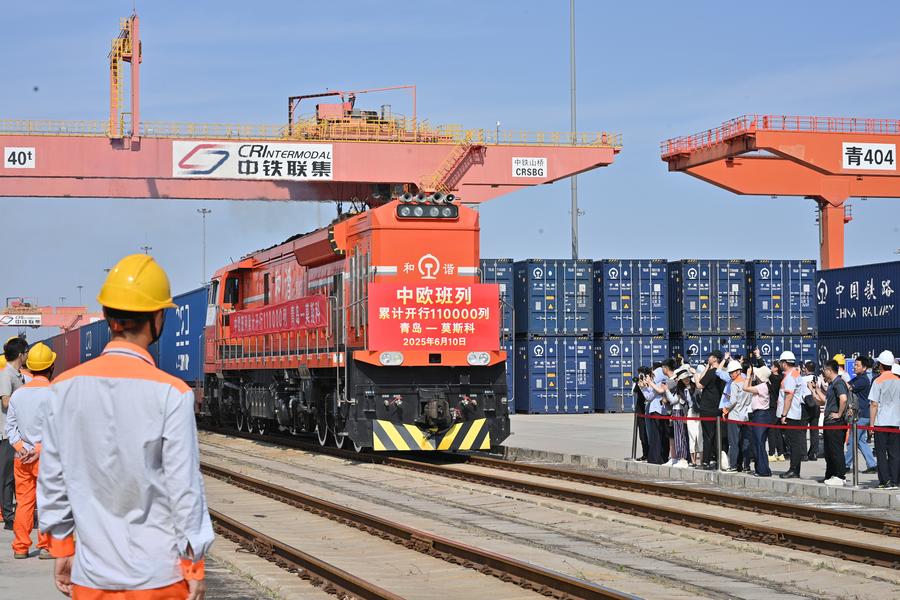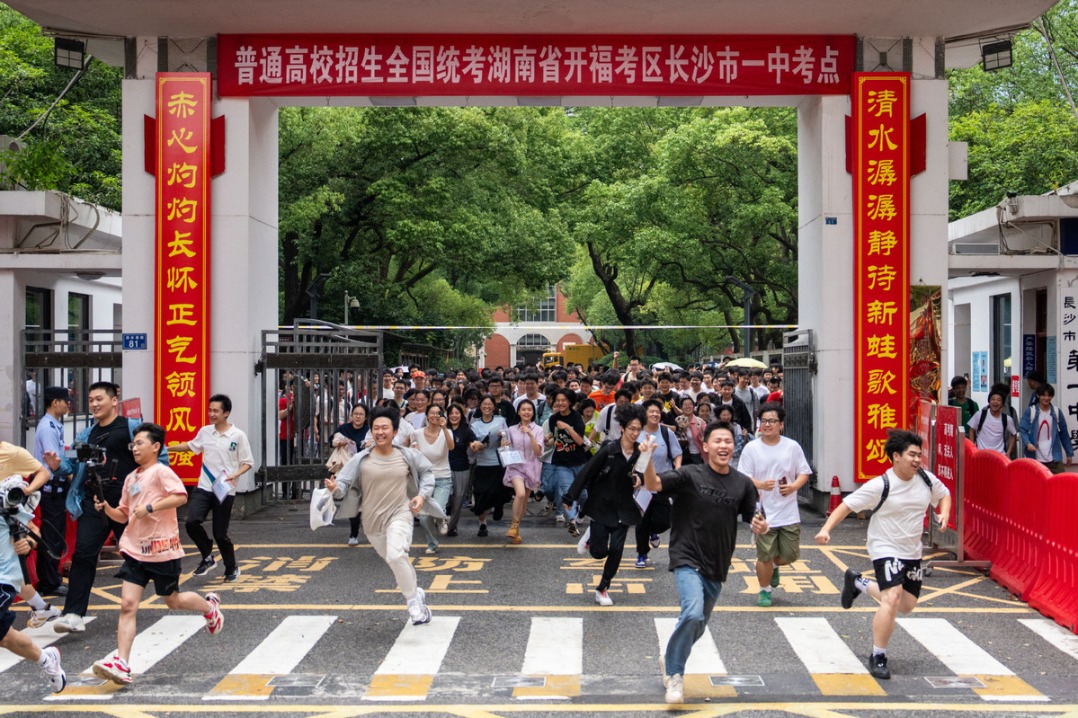China-Europe freight train reaches milestone
Key logistics network marked 110,000th trip, boosting global trade network


A freight train loaded with smart home appliances departed from the eastern Chinese port city of Qingdao in Shandong province on Tuesday, marking the 110,000th trip of the China-Europe freight train service — a milestone for a logistics network that has become a vital artery in global trade.
The train, carrying 55 containers filled with goods including LCD displays and refrigerators worth nearly 20 million yuan ($2.75 million), is bound for Moscow, Russia, and is expected to reach its destination in 17 days. It will pass through key Chinese cities such as Jinan in Shandong province, Shijiazhuang in Hebei province, and Taiyuan of Shanxi province before exiting the country at Ereenhot in the Inner Mongolia autonomous region.
Launched in 2011, the China-Europe freight train network has moved goods valued at more than $450 billion, according to China State Railway Group. Once a modest logistical experiment, the network has evolved into a cornerstone of the Belt and Road Initiative, offering a faster and increasingly cost-effective alternative to sea shipping.
So far, 128 Chinese cities have launched outbound rail services, connecting with 229 cities across 26 European countries and over 100 cities in 11 Asian nations. The rapidly growing network has emerged as a stabilizing force in global supply chains, especially during times of crisis.
The 110,000th train is a snapshot of the network's transformation.
"Over the past decade, we've grown from handling a handful of shipments to managing daily freight flows from China, as well as transshipment cargo from Japan, South Korea and Southeast Asia," said Gao Yitian, head of the Jiaozhou branch of the Jinan Railway Logistics Center in Qingdao.
Goods from East and Southeast Asia arrive in Qingdao port by sea, then continue west by rail to destinations across Europe. The route also facilitates eastbound shipments of European goods into Asia.
According to Gao, the operation has expanded from just one train a month to more than one each day, reaching destinations in 23 countries. The type of cargo has diversified from basic consumer goods to include high-value exports such as electronics, machinery and automobiles. Train speeds have also increased from 80 kilometers per hour to 120 kilometers per hour.
In the first five months of this year, 790 China-Europe freight trains departed from Shandong — a 4 percent increase from the same period last year. The Jiaozhou central terminal in Qingdao, where the landmark train departed, has become a model for logistical efficiency. The terminal's entire yard operates as a customs supervision zone, enabling what insiders call a "full-yard customs" model.
"Clients can complete all customs procedures — bonded storage, inspection, fumigation — in the same location where rail operations take place," said Ge Ran, deputy general manager of Qingdao branch at the China United International Rail Containers Co.
"This eliminates the need to shuttle containers between separate facilities, significantly cutting costs and time."
Trucks entering the terminal pass through a digital "smart gate" and gain immediate access to the customs zone — an innovation that has reduced handling delays and streamlined clearance. The improvements have proven especially valuable to manufacturers like Shandong Linglong Tyre Co, which began using rail in 2021 to ship critical materials to its factory in Serbia amid a spike in ocean freight prices and shipping container shortages.
"Though rail is slightly more expensive, it's much more reliable for high-value goods," said Pan Wenfeng, head of the company's inland logistics department. "Transit times are cut in half, and that's crucial for our operations."
Yang Ting contributed to this story.





































